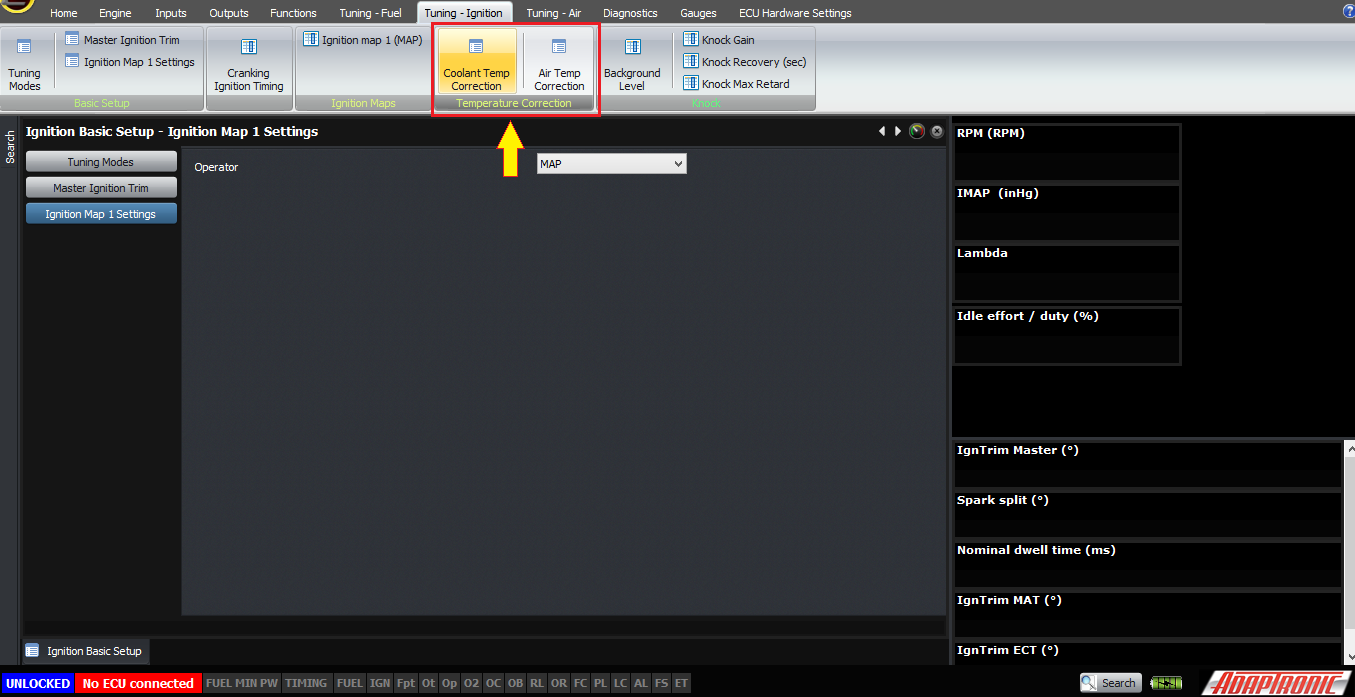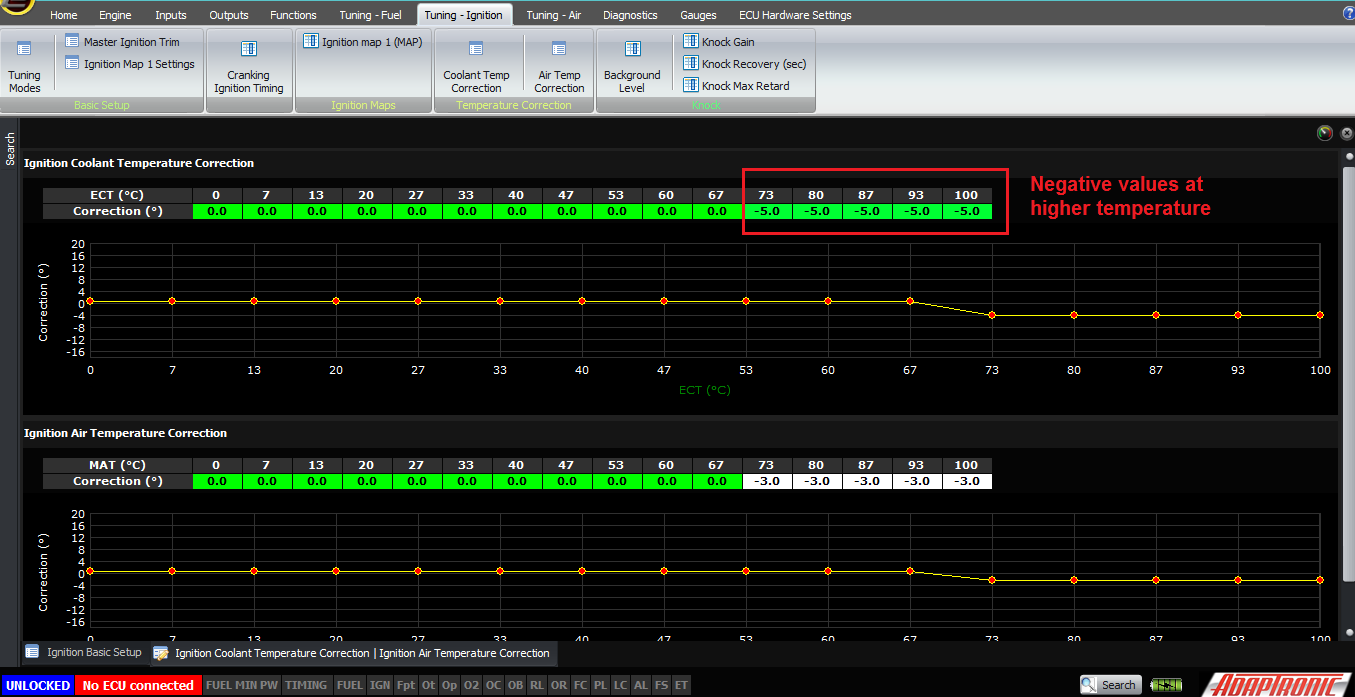Ignition Timing Tuning Modes on Modular ECUs

This article explains the different load axes of ignition mapping, as well as temperature corrections for ignition timing.
Similarly to the fuel mapping, the Adaptronic Modular ECUs can use a combination of MAP and TPS for ignition timing tuning. The ideal measurement would be the pressure of the air in the cylinder, which would be best approximated by MAP x VE. However we wouldn’t want a system whereby someone changes the fuel map and then that changes the ignition timing as well – even though that might be scientifically accurate, it’s important for ECUs to behave as tuners expect them, otherwise the tuner can’t make the ECU do what is needed.
It’s set in the settings for your ignition map, so if you’re using dual maps there will be a setting for ignition map 1 and another for ignition map 2.
Tuning-Ignition > Tuning Modes then enable dual maps
Notice that the ignition maps can be set separately.
The most basic is MAP. This has a pretty good correlation with the pressure of the air that’s in the cylinder, and therefore how quickly the flame front spreads through the engine, which is what you need to compensate for when you tune ignition timing against load. So this is the one we recommend most of the time.
Changing “Operator” can be found in “Ignition Map Settings” page
If you don’t have a MAP measurement, then you will have to use throttle position instead. This does not correlate all that well with pressure in the cylinder; at low RPM especially there will be a lot of movement within the first 20% of throttle change and from then on it won’t change much at all. So tuning ignition on throttle position will take longer than on manifold pressure but on some engines that all that is available.
Although pressure ratio is perfect for tuning fuel, it’s not appropriate for ignition timing – if it’s not obvious why then I’ll leave that as an exercise for you to work out.
We also offer MGP as a measurement. I don’t personally think it’s a good idea, because it’s a absolute pressure that affects the flame propogation rate, not the pressure relative to the outside of the engine. The rapid spreading of the Apollo 1 fire and a similar event in the USSR was due partially to the pure oxygen environment but also the elevated pressure; they had the command module pressured to about 1.1 bar or 16 PSI of absolute pressure during the Apollo 1 fire when the flammability testing was all designed to operate in space with a pressure of about 0.3 bar or 5 PSI. But I’ve heard the argument from one person that “tuners are used to tuning off gauge pressure” so we’ve put in that option as well.
On turbocharged cars with individual throttles, often the MAP does not fully tell the story of how well the engine is breathing, and that’s why those car need to have a combined MAP x TPS tune for the fuel model. On those cars, it’s possible to improve drivability by selecting a MAP + TPS ignition tune, perform the full MAP tune while leaving the TPS map at zero, and then adding some positive values in the TPS map at light throttle to increase light throttle torque.
I can’t think of a reason why someone would want to multiply MAP and TPS maps, as on the fuel system, but this option is also there for anyone who wants to use it – and these can be either MAP or MGP (although as I said above, MGP doesn’t really represent anything on the car).
In addition to the basic ignition tuning modes, you can, if you want to, add in correction for air and coolant temperature. Normally the engine would be tuned with these at zero, and then safety functions can be added for example putting in some negative values at high air or coolant temperatures. Please do not tune the engine with negative values in these tables, because what can happen is that during tuning, while the engine is on the dyno and there’s a lot of heat soak, temperatures are high and you can be in the part of the map with the negative correction in it. So if you tune with this correction in place, your basic map may end up too far advanced, and then when Fred takes it out for a drive when it’s cold the ignition timing could be too aggressive.


Setting up closed loop ignition timing with reference to knock control will be a separate article.
Thank you very much!
©2018 Adaptronic